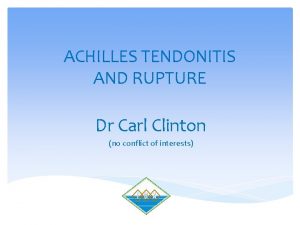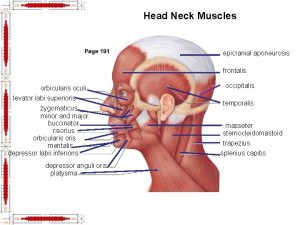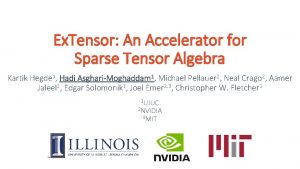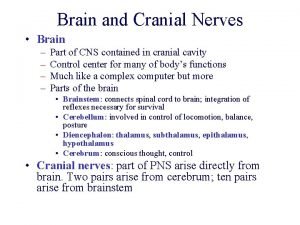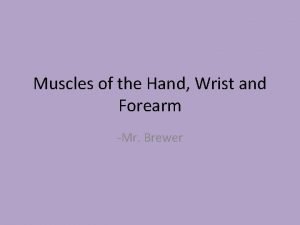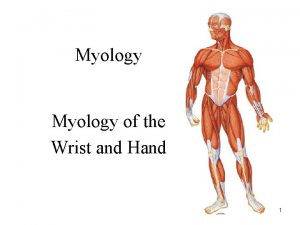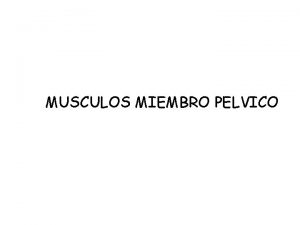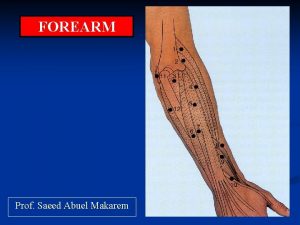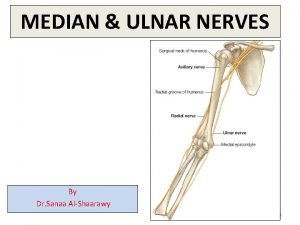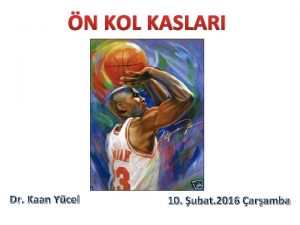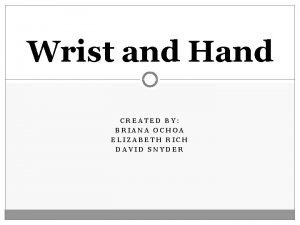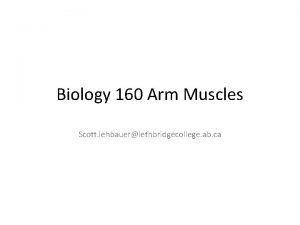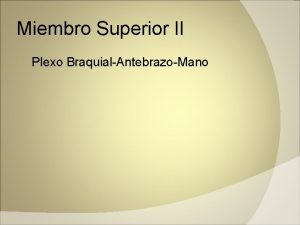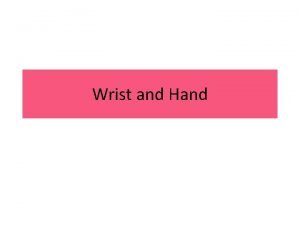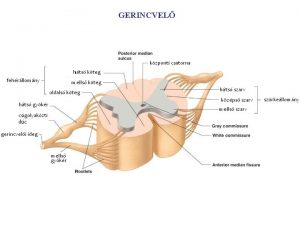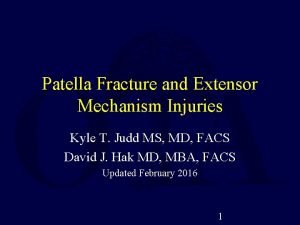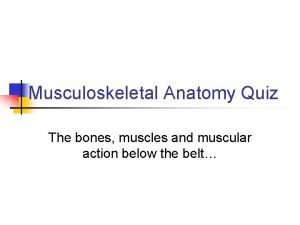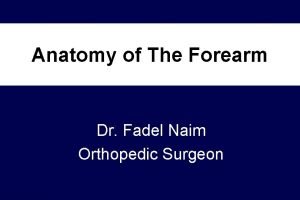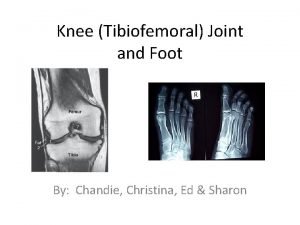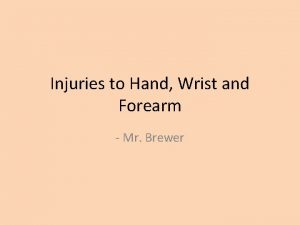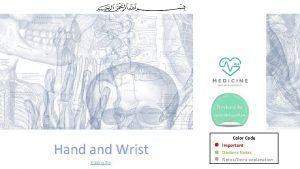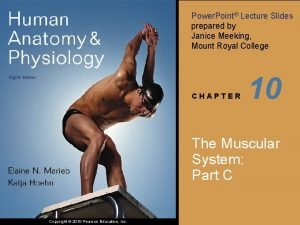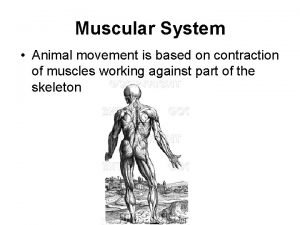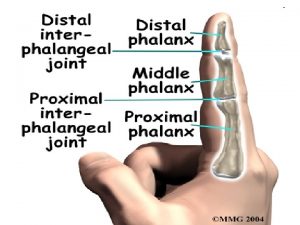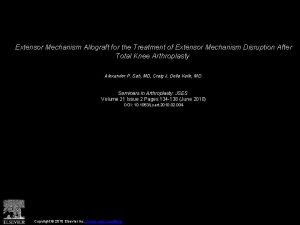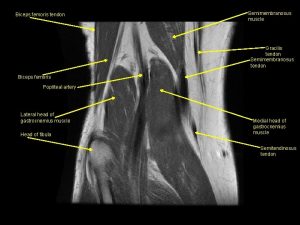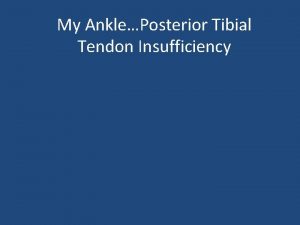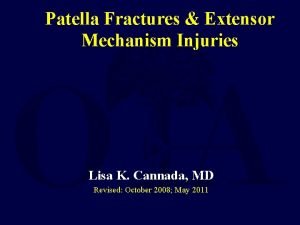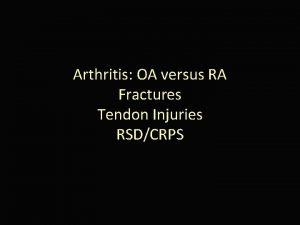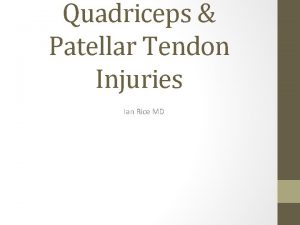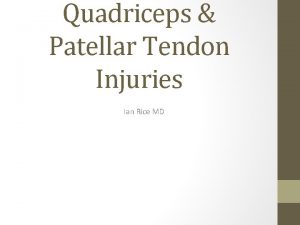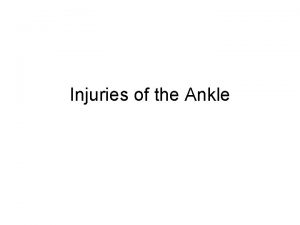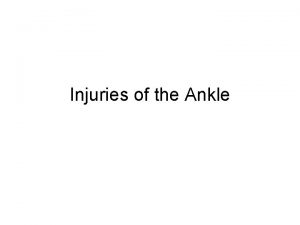Extensor Tendon Injuries James Ledgard Royal North Shore











































- Slides: 43

Extensor Tendon Injuries James Ledgard Royal North Shore Hospital and Lismore Registrar Teaching 11 th April 2017

Foundation Skills for Surgical Educators • Adult learning o Interaction o Motivation o Feedback • Treat you as colleagues • https: //respond. cc

Outline • • • Anatomy Zones of injury Recognition and Treatment Rehabilitation Complications

Copy of Presentation www. drjamesledgard. com. au

Extensor Compartments

Innervation Q

Innervation

Innervation

Typical Arrangement Q

Extensor Apparatus

Zones of Injury DIFFERENCES • Anatomy • Repair • Excursion • Rehab • Complications PLEASE WRITE IT IN YOUR OPERATION REPORTS

Zone 1 - Mallet Acute Soft Tissue Closed or or or Chronic Bony Open

Soft Tissue Mallet Splint 8 weeks then wean

Bony Mallet X-Ray CONSIDER • Fragment size • Volar subluxation – Only indication for surgery

Zone 3 – Central Slip Acute Soft Tissue Closed or or or Chronic Bony Open

Closed Central Slip SUSPECT IN • Blunt PIPJ trauma • Volar Dislocation

Diagnosis • • • Suspicion Tenodesis Weak extension Elson test Q X-Ray Follow-up Splint in extension 6 weeks then wean/dynamic another 6 weeks

Elson Test

Zone 4 and 5 • • • Partial Flat vs Round Avoid bunching Complex injury Rehab controversial Assess tension intraoperatively

Zone 6 • Round • Juncturae Tendinae • Corset Technique – Stiffer – Quicker – Less shortening Lee SK, Dubey A, Kim BH, et al: A biomechanical study of extensor tendon repair methods: introduction to the running-interlocking horizontal mattress extensor tendon repair, J Hand Surg [Am] 35: 19 - 23, 2010.

Zone 7 • Care with releasing compartments 4 and 6

Rehabilitation – Open Repairs • Zone 1 – 2 – Mallet splint 6 - 8 weeks • Zone 3 – Extension splint 6 weeks • Zone 4 – 5 – 30/30/0/0 splint 4 weeks • Zone 6 – 8 – 30/30 splint 4 weeks

Outcomes with Static Splinting • • 64% good or excellent 45% Flexion loss greater Zones 1 - 4 worse Simple injury Complex injury Extension loss Zones 5 - 8 Newport ML, Blair WF, Steyers CM Jr: Long-term results of extensor tendon repair, J Hand Surg [Am] 15: 961 -966, 1990.

Rehabilitation – Open Repairs ALTERATIONS • Partial injury • Good repair • Good therapist • Motivated patient • Complex injury CONSIDER • Passive protocol – Dynamic splint + Controlled flexion • Active protocol – Controlled flexion

Complications • • Extension Lag Poor Flexion Swan Neck Boutonniere

Swan Neck Deformity

Boutonniere Deformity • What causes a Boutonniere deformity? Q

Boutonniere Deformity Q

Summary • Anatomy is key • Zone of injury is important so record it – Repair – Rehab – Complications • Prevention of complications through good management is better than cure

Foundation Skills for Surgical Educators • https: //respond. cc • The session key is: 705558

Q 1. Why can this man with a nerve injury extend his wrist?

Q 1. Why can this man with a nerve injury extend his wrist? a. ECRB is innervated by the radial nerve. b. The radial nerve is spared. c. He has a partial radial nerve injury.

Q 1. Why can this man with a nerve injury extend his wrist? a. ECRB is innervated by the radial nerve. b. The radial nerve is spared. ✔ c. He has a partial radial nerve injury.

Q 2. Why are you able to extend your IF and LF independently?

Q 2. Why are you able to extend your IF and LF independently? a. They are innervated by a different nerve. b. Each has an independent musculotendinous unit. c. There is a separate tendon from EDC to both.

Q 2. Why are you able to extend your IF and LF independently? a. They are innervated by a different nerve. b. Each has an independent musculotendinous unit. ✔ c. There is a separate tendon from EDC to both.

Q 3. Why is the DIPJ not floppy when the Elson Test is positive?

Q 3. Why is the DIPJ not floppy when the Elson Test is positive? a. Because the injured central slip extends the DIPJ. b. Because the lateral bands tighten with flexion of the finger. c. Because the injured central slip puts proximal tension on the lateral bands.

Q 3. Why is the DIPJ not floppy when the Elson Test is positive? a. Because the injured central slip extends the DIPJ. b. Because the lateral bands tighten with flexion of the finger. c. Because the injured central slip puts proximal tension on the lateral bands. ✔

Q 4. What is the cause of a Boutonniere Deformity?

Q 4. What is the cause of a Boutonniere Deformity? a. Central slip failure. b. There are multiple causes for a Boutonniere Deformity. c. Lateral bands translate volar to the axis of rotation of the PIPJ.

Q 4. What is the cause of a Boutonniere Deformity? a. Central slip failure. ✔ b. There are multiple causes for a Boutonniere Deformity. c. Lateral bands translate volar to the axis of rotation of the PIPJ.

Presentation available at www. drjamesledgard. com. au ‘For Colleagues’ at bottom of page Password: Hands
 Tendonitis clinton
Tendonitis clinton Cady's map to north shore high school
Cady's map to north shore high school Steamship america a north shore legend
Steamship america a north shore legend North shore triathlon
North shore triathlon North shore travel
North shore travel Extensor aponeurosis
Extensor aponeurosis Flexor largo del dedo gordo
Flexor largo del dedo gordo Extensor: an accelerator for sparse tensor algebra
Extensor: an accelerator for sparse tensor algebra Babinski reflex
Babinski reflex Crossed extensor reflex
Crossed extensor reflex Wrist flexion and extension muscles
Wrist flexion and extension muscles Metacarpal head
Metacarpal head Extensor superficial de los dedos
Extensor superficial de los dedos Extensor expansion
Extensor expansion Ulnar neuropathy
Ulnar neuropathy Anatomik enfiye çukuru
Anatomik enfiye çukuru Anatomik enfiye çukuru sınırları
Anatomik enfiye çukuru sınırları Ulnar surface of hand
Ulnar surface of hand Extensor digitorum communis action
Extensor digitorum communis action Musculo pronador redondo
Musculo pronador redondo Muscle atlas of the human body
Muscle atlas of the human body Fibro osseous tunnel
Fibro osseous tunnel Reflejo extensor cruzado
Reflejo extensor cruzado Extensor digitorum brevis origin and insertion
Extensor digitorum brevis origin and insertion Keresztezett hajlító feszítő reflex
Keresztezett hajlító feszítő reflex Intact extensor mechanism
Intact extensor mechanism Muscles action
Muscles action Spasticity vs tone
Spasticity vs tone Origin of flexor digitorum superficialis
Origin of flexor digitorum superficialis Flexor digitorum longus innervation
Flexor digitorum longus innervation Deltoid tuberosity
Deltoid tuberosity Dorsiflexion of wrist
Dorsiflexion of wrist Volar vs palmar
Volar vs palmar Oec clinic
Oec clinic Nerve supply of hand
Nerve supply of hand Extensor pollicis longus
Extensor pollicis longus Gluteus medius m.
Gluteus medius m. Flexor and extensor muscles
Flexor and extensor muscles Innervation of extensor carpi ulnaris
Innervation of extensor carpi ulnaris Origin of the supinator
Origin of the supinator True north vs magnetic north
True north vs magnetic north North east and north cumbria integrated care system
North east and north cumbria integrated care system Chapter 14 north and south
Chapter 14 north and south The north pole ____ a latitude of 90 degrees north
The north pole ____ a latitude of 90 degrees north
